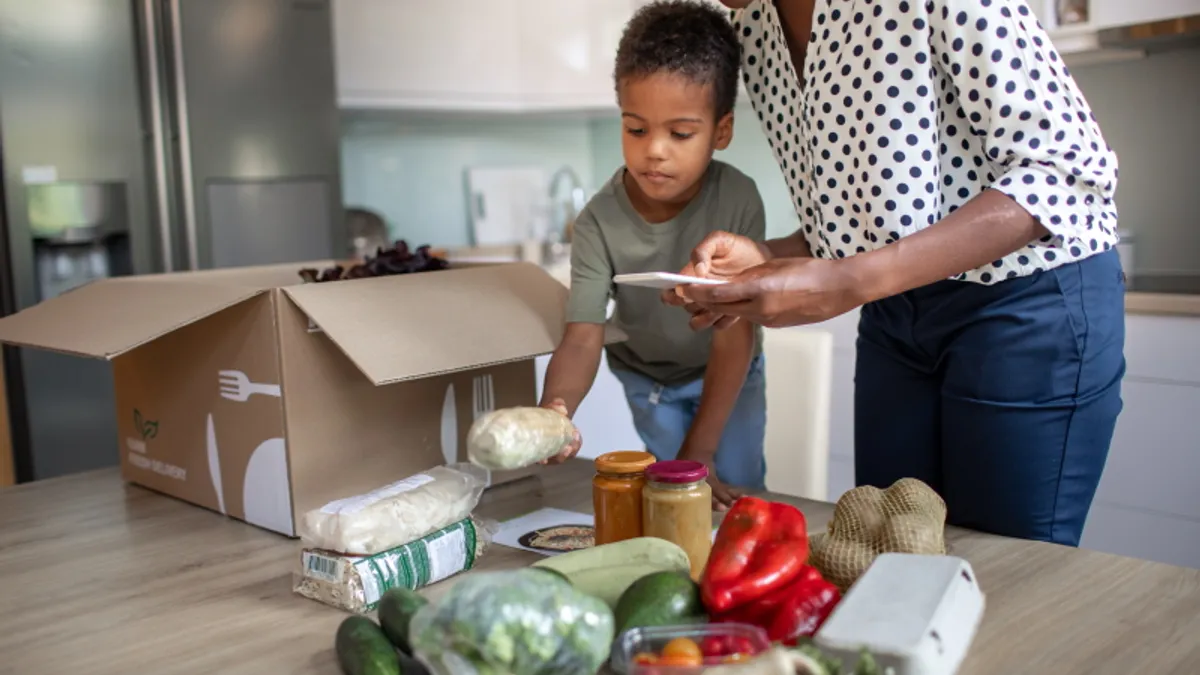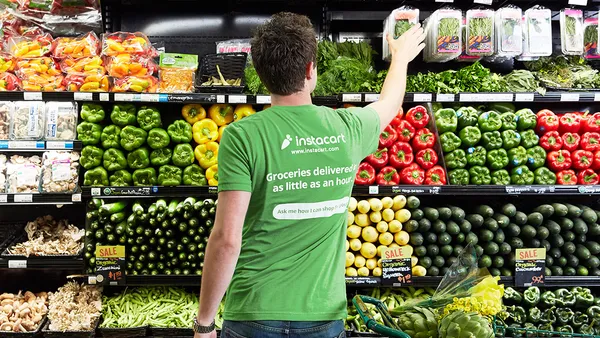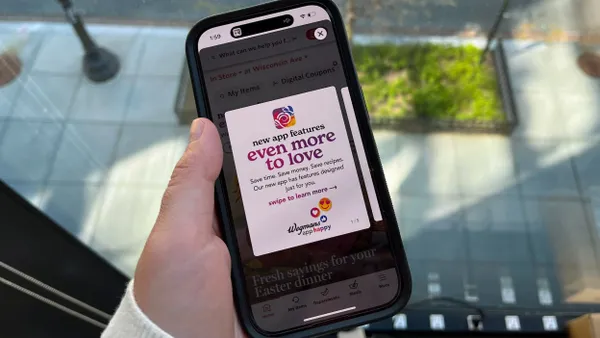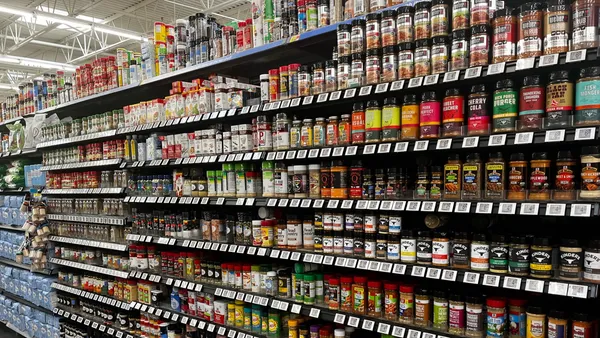What is a third-party marketplace?
From Netflix to Martha Stewart, industries across the board are racing to launch third-party marketplaces. What exactly is a third-party marketplace? Put simply, it's a way to sell things that you never need to keep in inventory. You sell items that you don’t own — and the monetization opportunities that come with this are enormous.
Think about it. With a third-party marketplace, you're pairing a group of suppliers with customers they didn't earn through your brand. The business models and the possibilities this structure creates are endless, especially when it comes to the grocery industry: About 30% of food in American grocery stores is thrown away.
How do third-party marketplaces impact grocers?
The online grocery industry skyrocketed during the pandemic. In one study, 43% of shoppers surveyed reported shopping online in the last six months versus 24% two years ago. The same research suggests that e-commerce grocery sales are projected to climb from nearly $35 billion to more than $250 billion.
So it's no surprise that, at the same time, major grocery chains and retailers around the world are getting excited about third-party marketplaces. Take it from Mike Herder, the VP of sales and marketing at Marketplacer. Like most shoppers, Herder is passionate about food. A couple of years ago, he even asked his local grocery store to start carrying a specific hot sauce that his wife loves.
Can you bring to mind that one item that you wish every store carried? See it. Taste it. And then consider how everyone likely has a different answer, a different item. Now imagine if there were a one-stop shop to satisfy everyone's palette — one place where you could get your favorite food items with ease. That's a third-party marketplace, and these are just a taste of their benefits.
Selling without inventory
Food is a personal experience that varies from person to person. What if, as a grocer, you could satisfy all of your customers? Now you can, with a third-party marketplace. In the past, most grocers were restrained by space, but that's no longer the case.
"You now have the movement of inventory through a highly weaponized supply chain that exists as an option for people to get things they want pretty fast," Herder explains. Gone are the days when you worried about how many SKUs you could carry on your shelves or when to restock them. With a third-party marketplace, there are no limits to what you can sell.
"For the first time in modern history, you can sell things that you don't own and not go to jail for it. And I think that's pretty cool," he says.
Improving the grocery experience
You have a relationship with the food you eat, and you also have a relationship with the place that you buy your food. Chances are you have a go-to grocery store, bakery or butcher. Sometimes you go to one grocer out of convenience, and other times, you go to another for the freshness. But what if the customer experience could be automated in a way that makes each shopping trip a consistent, pleasurable experience?
"People simply aren’t buying products the same way they used to," says Herder. "They’re purchasing collections of products around the experience they want to have, and there are so many opportunities for well-trusted brands to extend this improved experience to their customers."
With a third-party marketplace, grocery stores can ensure customers don't have to go to multiple stores or plan ahead. Whether your customer is the champion of the barbecue or the queen of the charcuterie board, a third-party marketplace gives them a more convenient and seamless shopping experience they can trust every time.
Increasing data and dedicated customers
Data and retention lead to dollars in today’s world, and by not partnering with a third-party marketplace, you’re losing both. If a shopper searches for a product on your website and you don’t have it, at that moment there’s a high chance they will abandon their cart. In fact, research has found that the average shopping cart abandonment rate of e-commerce websites is a whopping 65.23%.
It's not that the cart never checks out. It does—but it checks out somewhere else. And when your potential customer goes elsewhere, you lose more than the customer; you lose the ads, the margin, the right to sell other products and the right to understand the data that sits behind it.
On the other hand, what you gain by keeping the customer and completing the transaction is that they'll come back for more. You'll also have more data on how to satisfy them in the future and keep them coming back.
"For a long time, how you bought things and how you sold them were different," Herder says. "Never having to take things in inventory simplifies so much of the way data is managed, the way things are purchased and the way things are moved."
What are the latest trends and the state of e-commerce grocery?
"There’s no more space constraint. How cool is that?" says Herder. "People used to pay all this money just for the right to be on the shelf in the store because space was a constraint. And now it's not a thing anymore in the digital world."
The trends happening today in the e-commerce grocery industry are all centered around removing barriers, adding choices and improving the shopping experience—and that's all supported by third-party marketplaces.
"When you remove constraints, there are several things you can do—from rounding out the customer's palate to curating the experience to improving your ads to even providing your customers with prescriptive diet recommendations. You can do it all without being limited by shelf space," he says.
Grocery e-commerce is also set to make up 12.4% of US e-commerce sales in 2021, and even venture capital firms are taking note of this huge shift in the customer shopping experience. One Marketplacer client believed in them so much it invested in the company. How's that for a committed customer?
What do recovery and expansion look like post-pandemic?
If space were not a constraint and you could sell unlimited SKUs, how would you best delight your customers? Grocers now have an opportunity to refine their business model and reimagine it altogether.
This is a moment to rethink what the grocery experience looks like and expand on what's possible. Yes, there is going to be a recovery process, but with recovery also comes new possibilities.
During the pandemic, 79% of consumers bought groceries online, and 78% of consumers changed where they shop for food. People all over the world are reimagining how they consume, buy and cook food. Why not reimagine with them and give them all of the options? Consumers have more choices now—and so do grocers who want to be there for their customers.
This is truly an exciting time to be in the e-commerce grocery space. As a grocer, it's up to you whether you take this opportunity—and whether you have fun reimagining while doing it.
————
Want to see how a third-party marketplace can elevate your brand? Reimagine with Marketplacer and schedule a call.










